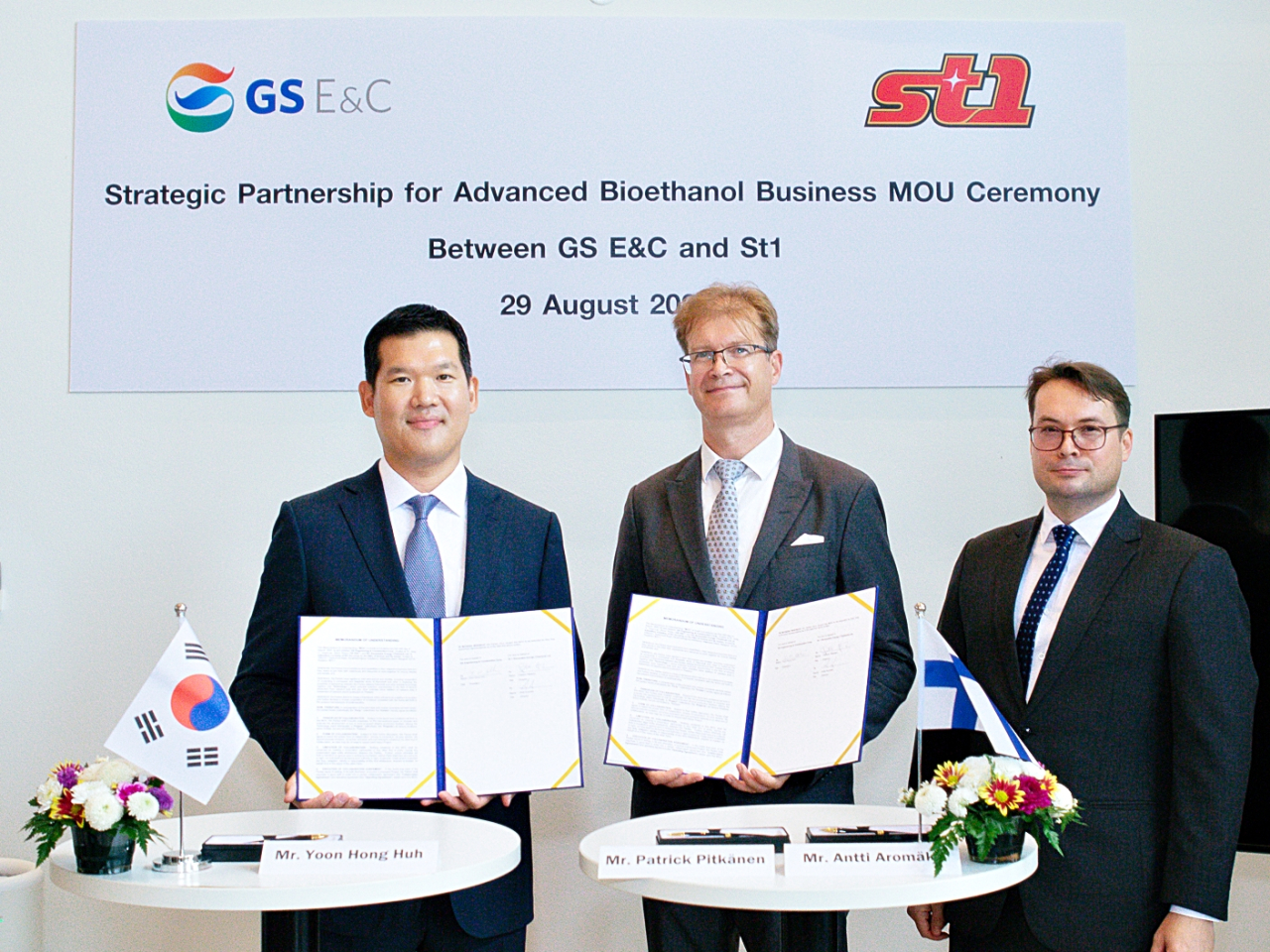
GS E&C President Huh Yoon-hong (left), Patrick Pitkanen (center) and Antti Aromaki pose for a photo after signing a memorandum of understanding for technological cooperation on Monday in Bangkok. (GS E&C)
GS Engineering and Construction said it has joined hands with a Finnish energy company to produce bioethanol using cassava peels waste in Thailand.
Cassava is a nutty tasting, starchy root vegetable that looks like sweet potatoes and is grown in tropical regions.
Huh Yoon-hong, president of GS E&C’s new businesses unit, and Patrick Pitkanen, director of St1 Renewable Energy (Thailand) Ltd, signed a memorandum of understanding on Monday in Bangkok on technological cooperation to produce bioethanol.
St1 Renewable Energy, part of the St1 Nordic Group, has the technology to produce next-generation bioethanol using cassava pulp.
GS E&C has a track record of projects in Thailand over the past 20 years including a UHV plant, an HMC PP petrochemicals plant and a PTTLNG import terminal.
Thailand is the world’s third-largest producer of cassavas.
GS E&C said the envisioned project is meaningful, as it uses cassava peels waste instead of food such as corn, sugar cane, wheat and cassava, which have been used to produce bioethanol until now.
Starting with global water treatment company GS Inima, GS E&C has been expanding its scope of eco-friendly new businesses to eco-friendly modular homes, recycling of rechargeable batteries and smart fish farms.
“We expect the cooperation with (St1) to be a flare for the next-generation bioethanol production business using unutilized waste,” Huh said.
“We will continue efforts to become the nation’s leader of sustainable management by exploring new eco-friendly, digital-based business opportunities.”
By Kim So-hyun (sophie@heraldcorp.com)






![[KH Explains] Hyundai's full hybrid edge to pay off amid slow transition to pure EVs](http://res.heraldm.com/phpwas/restmb_idxmake.php?idx=645&simg=/content/image/2024/04/18/20240418050645_0.jpg&u=20240419100350)